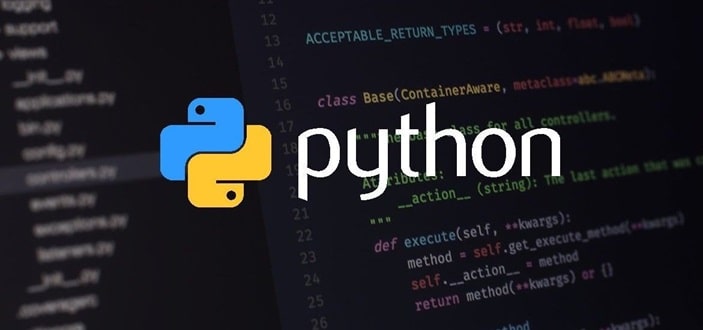Python, a versatile and powerful programming language, has become one of the most popular choices for developers around the world. Known for its simplicity and readability, Python is widely used in various domains, from web development to data science, machine learning, artificial intelligence, and automation. Python’s ease of learning and ability to integrate with other technologies have made it the go-to language for both beginners and experienced programmers.
However, like any programming language, Python has its advantages and disadvantages, which developers need to consider when choosing it for their projects. In this article, we will explore the key pros and cons of the Python programming language.

Advantages of Python Programming Language
1. Simple and Easy to Learn
One of the biggest reasons for Python’s immense popularity is its simplicity. Python has a clean and straightforward syntax that is easy to understand, even for those who are new to programming. Unlike languages like C++ or Java, Python does not require developers to write lengthy lines of code for simple tasks, making it highly readable and maintainable. The use of indentation instead of curly braces or keywords to define code blocks further enhances its simplicity.
This makes Python an excellent choice for beginners and is often the first language taught in schools and universities to introduce students to programming concepts.
2. Versatility Across Domains
Python is a general-purpose programming language, meaning it can be used for a wide range of applications. Whether you are working on web development, data analysis, artificial intelligence, machine learning, automation, or even game development, Python has the tools and libraries to support it. The language’s flexibility and adaptability allow developers to switch between domains without having to learn new languages.
Python’s extensive ecosystem includes libraries like Django and Flask for web development, Pandas and NumPy for data analysis, and TensorFlow and Keras for AI and machine learning, making it a truly versatile language.
3. Large and Active Community
Python has a large and vibrant community of developers that actively contributes to its growth and development. The open-source nature of Python ensures that developers from around the world can contribute to its libraries, frameworks, and tools. This extensive support system means that when developers encounter problems or challenges, they can easily find solutions through community forums, documentation, and tutorials.
Additionally, Python’s popularity means that there are numerous third-party libraries and tools available for almost any task, ranging from web scraping to image processing and scientific computing.
4. Extensive Libraries and Frameworks
One of Python’s greatest strengths lies in its libraries and frameworks. Python’s standard library provides a wide range of built-in modules and functions, which allow developers to perform tasks like file handling, mathematical calculations, and network operations without writing additional code. On top of that, Python has thousands of third-party libraries available for different domains, further simplifying development.
For instance, NumPy and Pandas are essential for data science and numerical computations, Matplotlib and Seaborn are used for data visualization, and Django and Flask are popular frameworks for web development.
5. Cross-Platform Language
Python is a cross-platform language, meaning that Python code can run on multiple operating systems, such as Windows, Linux, macOS, and even mobile platforms. This portability ensures that developers do not need to rewrite their code when switching between different platforms. Python’s cross-platform capabilities make it a favourite for developers who need to create software that works on multiple operating systems.
In addition, Python’s support for various Integrated Development Environments (IDEs) like PyCharm, Visual Studio Code, and Jupyter Notebook makes it easy to develop and test code on different platforms.
6. Support for Multiple Programming Paradigms
Python is a multi-paradigm programming language, which means it supports different programming styles. It allows developers to write code in:
- Procedural programming, where code is organized into procedures or functions.
- Object-oriented programming (OOP), where code is structured around objects and classes.
- Functional programming, which treats computation as the evaluation of mathematical functions.
This flexibility allows developers to choose the best paradigm for the task at hand, making Python suitable for a variety of projects.
7. Highly Scalable
Python’s scalability makes it a great choice for both small scripts and large-scale enterprise applications. Due to its vast ecosystem and the availability of high-performance libraries and frameworks, Python can handle growing workloads efficiently. Many tech giants like Google, Instagram, Spotify, and Dropbox use Python to build scalable and reliable systems that can support millions of users.
8. Automation and Scripting
Python is widely used for automation and scripting. With Python, developers can easily automate repetitive tasks, such as file handling, web scraping, testing, and even managing system configurations. Python scripts can be written quickly and easily to perform specific tasks, making it a powerful tool for DevOps and system administrators.
Libraries like Selenium and BeautifulSoup are commonly used for web automation and scraping, while tools like Ansible and Fabric use Python for automating system administration tasks.
Disadvantages of Python Programming Language
1. Slower Execution Speed
One of the main drawbacks of Python is its slower execution speed compared to compiled languages like C, C++, or Java. Python is an interpreted language, meaning that the code is executed line by line by the interpreter, which adds overhead and slows down the execution. This slower speed makes Python less suitable for performance-critical applications, such as real-time systems or high-performance computing.
However, for most modern applications, the performance gap is often acceptable, especially considering the ease of development that Python offers.
2. Higher Memory Consumption
Python is known for its higher memory consumption compared to other languages. This is primarily due to its automatic memory management through garbage collection and dynamic typing, which requires more memory to store data types and objects. Applications that require efficient memory management, such as those running on embedded systems or low-resource devices, may find Python less suitable due to its higher memory overhead.
3. Weak in Mobile Development
While Python is highly versatile, it is not widely used for mobile application development. Most mobile apps are built using languages like Swift (for iOS) or Kotlin (for Android), as Python lacks the native support and performance needed for mobile platforms. Although libraries like Kivy and BeeWare exist for developing mobile apps in Python, they are not as widely adopted as native mobile development frameworks.
As a result, Python is less ideal for developers focusing on mobile app development, where performance and native support are critical.
4. Runtime Errors Due to Dynamic Typing
Python is dynamically typed, which means that the type of a variable is determined at runtime. While this feature simplifies coding, it also makes Python more prone to runtime errors. Without strict type checking during compilation, errors related to data types may only surface during execution, potentially leading to bugs that are harder to detect during the development process.
This can be particularly problematic for large applications, where errors related to type mismatches can impact the stability of the program.
5. Not Suitable for High-Performance Applications
Python’s slow execution speed and higher memory consumption make it unsuitable for high-performance applications that require real-time processing, such as gaming engines, 3D rendering, or high-frequency trading systems. For these types of applications, developers often prefer lower-level languages like C, C++, or Rust, which offer finer control over memory management and system resources.
6. Threading Limitations
Python’s threading model is limited by the Global Interpreter Lock (GIL), which prevents multiple threads from executing Python bytecode simultaneously. This means that Python’s multithreading capabilities are not as efficient as in other languages, such as Java or C++, for CPU-bound tasks. While Python’s multiprocessing module provides a workaround by using multiple processes instead of threads, the GIL can still be a bottleneck in applications that require heavy multithreading.
7. Database Access Limitations
While Python has good support for database access through libraries like SQLAlchemy and Django ORM, it is not as strong as other languages like Java or C# when it comes to handling complex database operations. Python’s database access layers are often slower and less efficient for large-scale, enterprise-level applications that require extensive database interaction. For this reason, Python is not always the best choice for applications that are highly dependent on database performance.
Conclusion
Python is a powerful, versatile, and easy-to-learn programming language that offers numerous advantages, especially in domains like web development, data science, machine learning, and automation. Its simple syntax, extensive libraries, and cross-platform capabilities make it a popular choice for both beginners and experienced developers.
However, Python is not without its limitations. Its slower execution speed, higher memory consumption, and threading restrictions make it less suitable for performance-critical applications and mobile development. Despite these drawbacks, Python’s flexibility, ease of use, and wide range of applications ensure its continued relevance in the world of programming. As long as developers are aware of its limitations and strengths, Python remains an excellent tool for modern software development.

